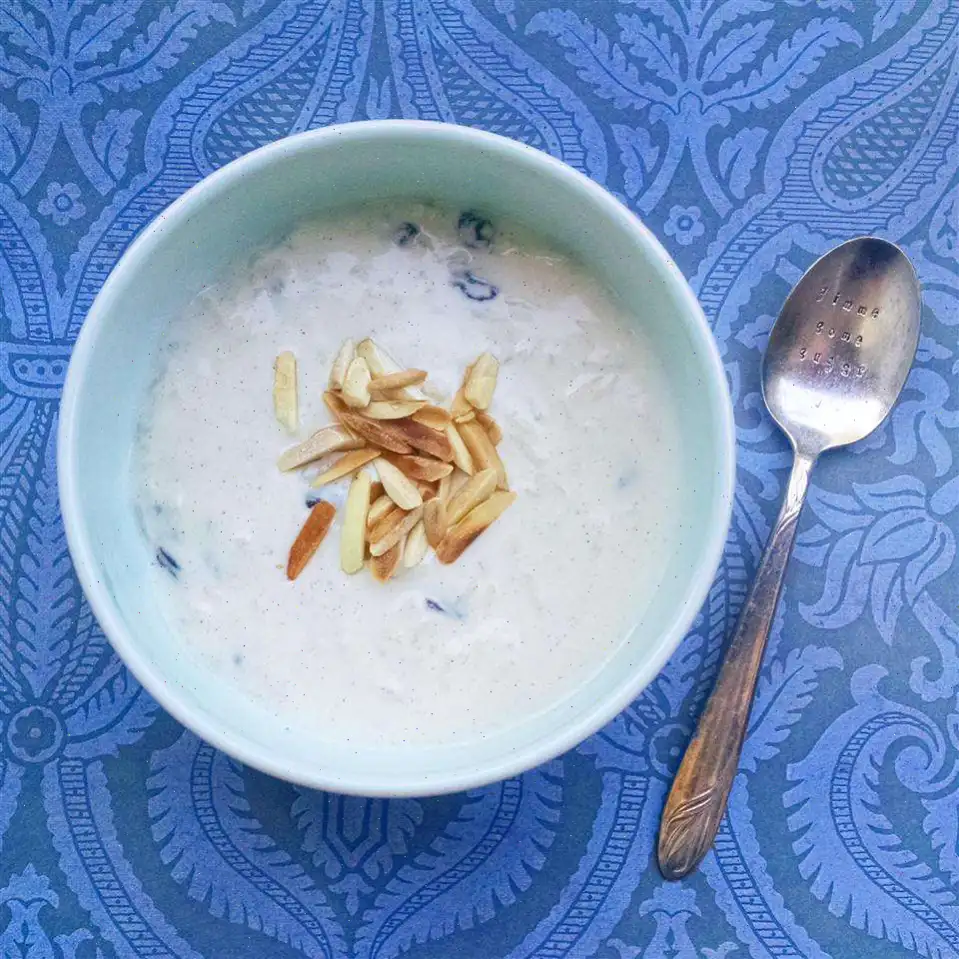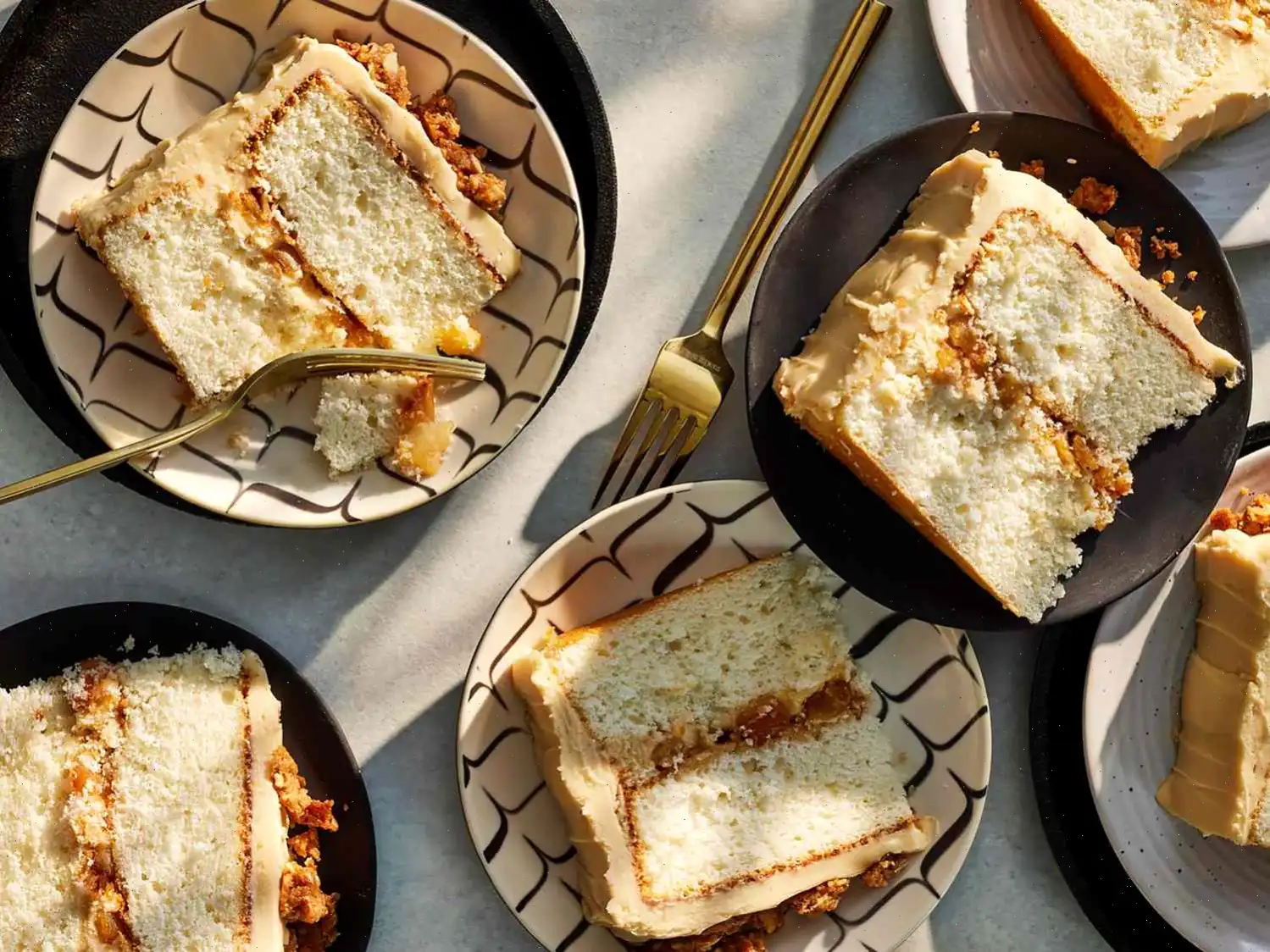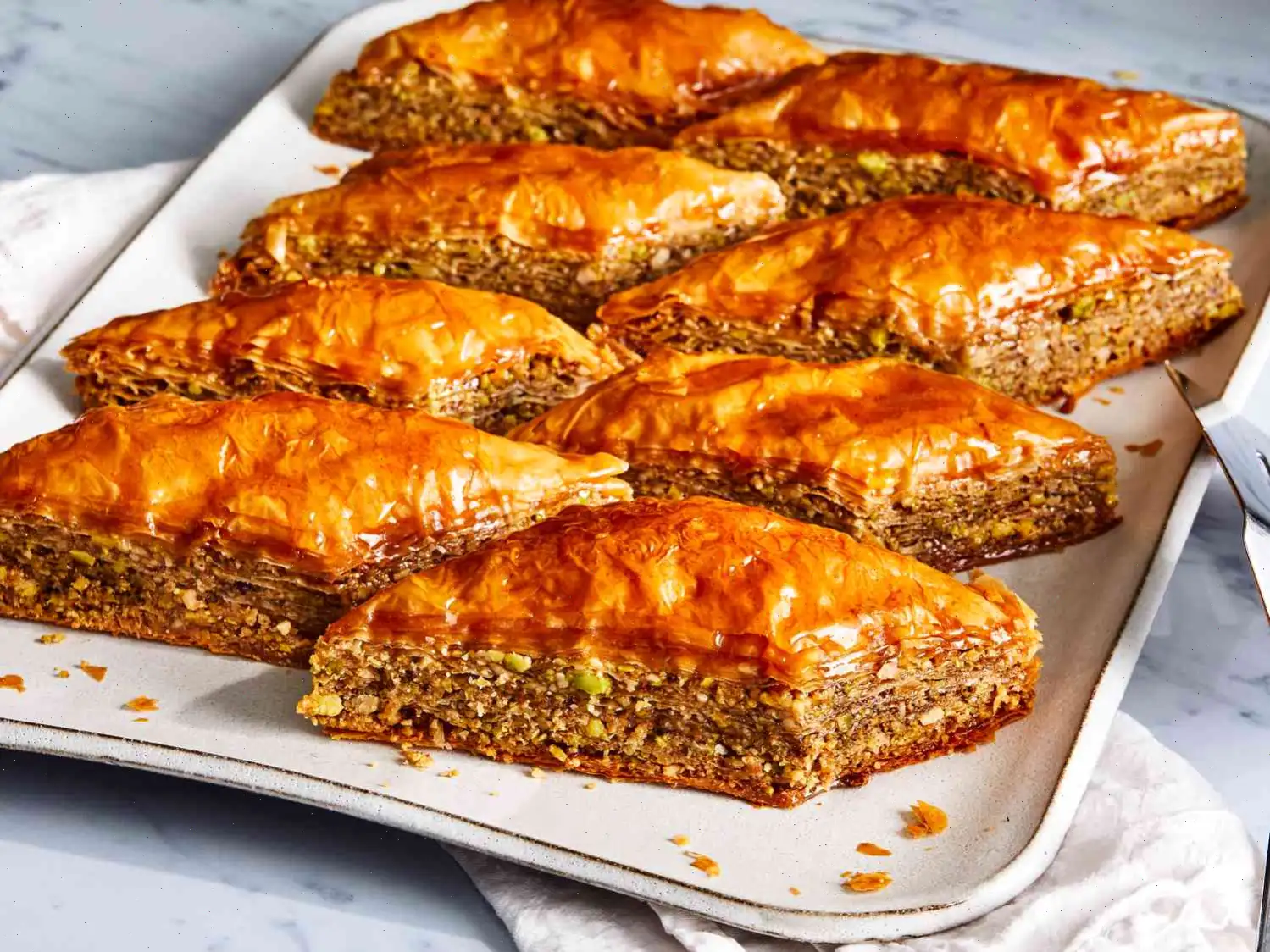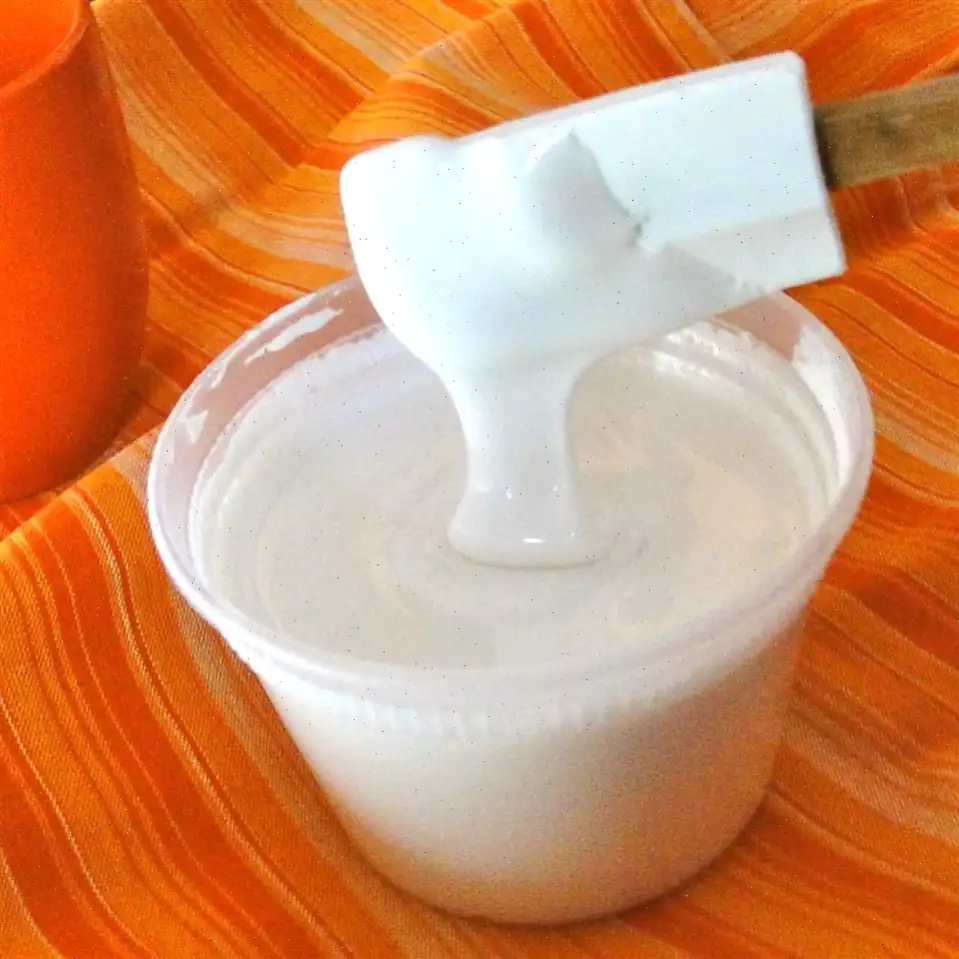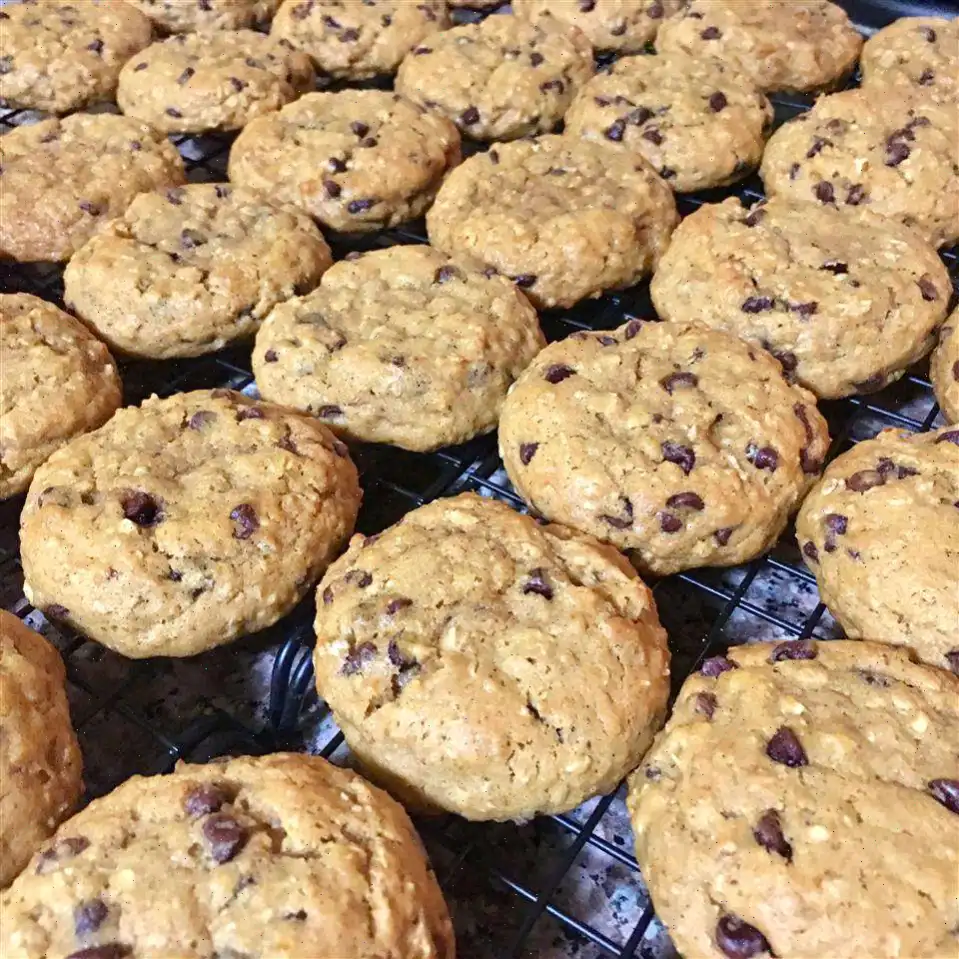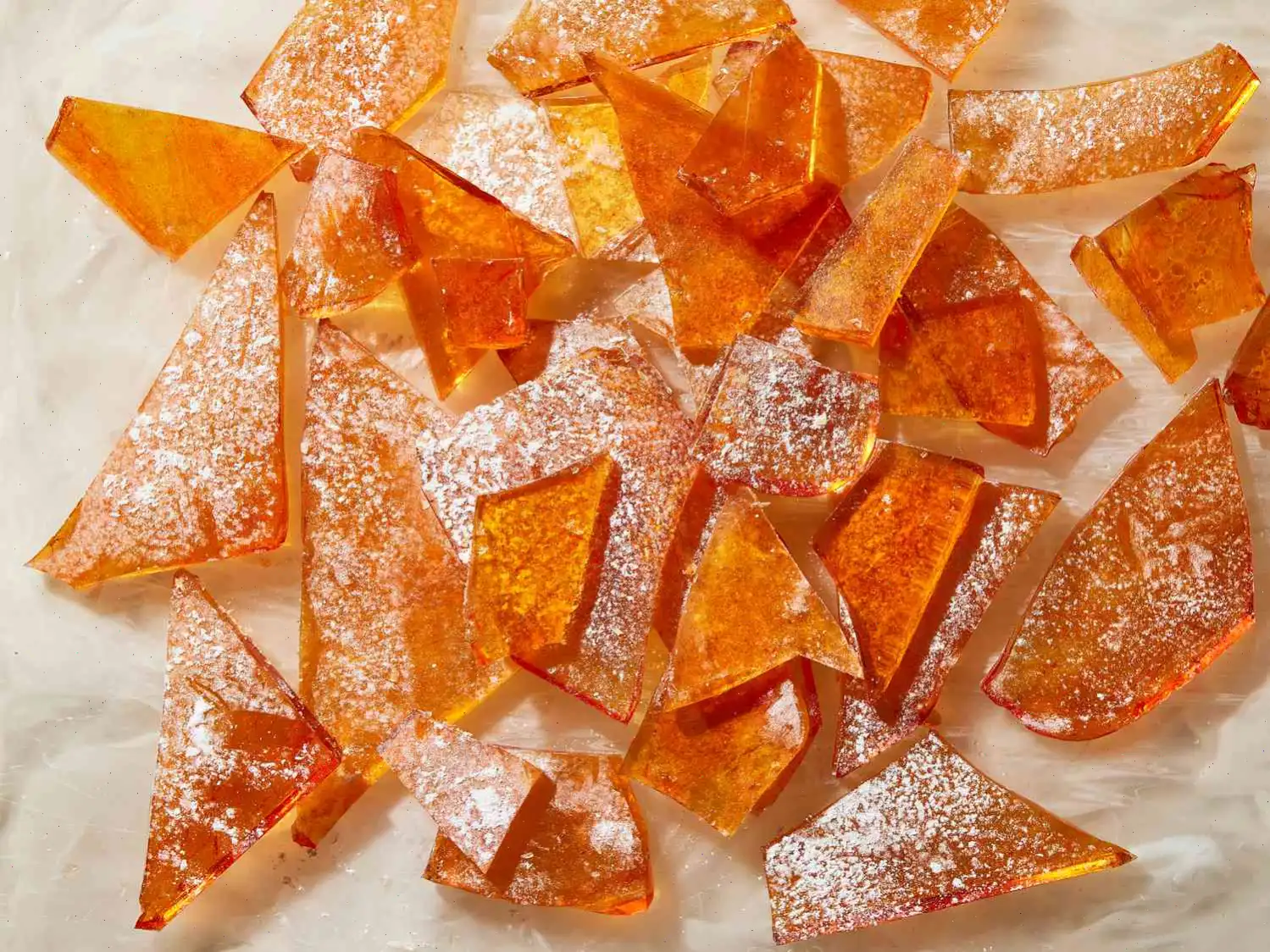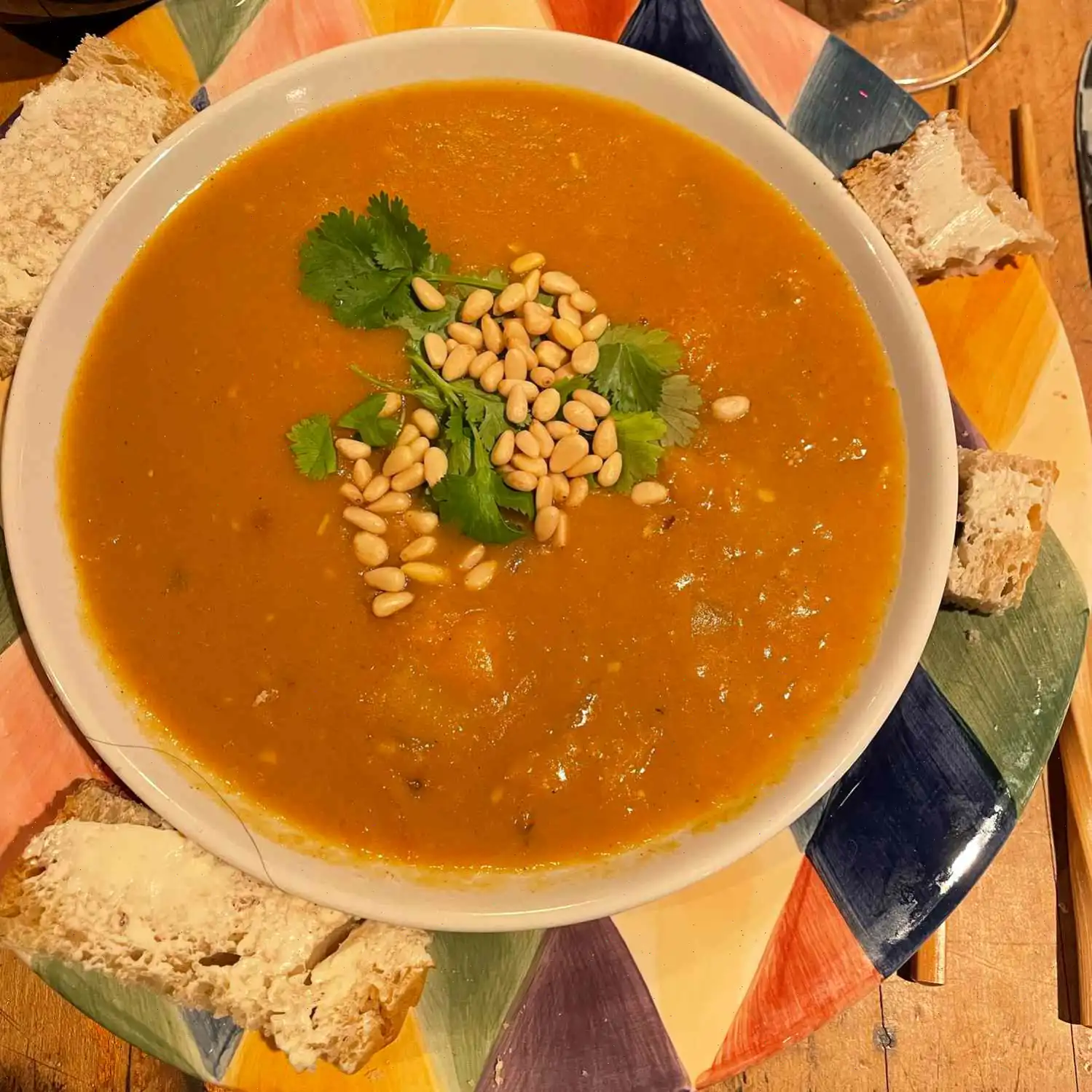
Kheer (Rice Pudding) Recipe
Ingredients:
- 2 cups coconut milk
- 2 cups milk
- 3 tablespoons white sugar
- cup basmati rice
- cup raisins
- teaspoon ground cardamom
- teaspoon rose water (optional)
- cup sliced almonds, toasted
- cup chopped pistachio nuts
Directions:
- In a large saucepan, combine the coconut milk, regular milk, and white sugar. Bring to a boil over medium heat, stirring occasionally to dissolve the sugar.
- Once the mixture is boiling, add the basmati rice. Reduce the heat to low and let it simmer for approximately 20 minutes, or until the mixture thickens and the rice becomes tender.
- Stir in the raisins, ground cardamom, and rose water (if using). Continue cooking for a few more minutes, allowing the flavors to blend.
- Once cooked, ladle the rice pudding into serving bowls. Garnish with toasted almonds and chopped pistachios for an extra crunch and a touch of elegance.
Nutrition Facts (per serving):
| Calories | 513 |
| Total Fat | 33g |
| Saturated Fat | 24g |
| Cholesterol | 10mg |
| Sodium | 99mg |
| Total Carbohydrate | 48g |
| Dietary Fiber | 3g |
| Total Sugars | 22g |
| Protein | 11g |
| Vitamin C | 2mg |
| Calcium | 195mg |
| Iron | 4mg |
| Potassium | 627mg |
*Percent Daily Values are based on a 2,000 calorie diet. Your daily values may be higher or lower depending on your calorie needs.
**Nutrient information is not available for all ingredients. Amount is based on available nutrient data.
If you are following a medically restrictive diet, please consult your doctor or registered dietitian before preparing this recipe for personal consumption.

Author: Patrick7
History of Kheer
Kheer, a beloved traditional dessert of South Asia, traces its origins to ancient India, where it has been prepared for centuries. The dish, commonly made with rice, milk, and sugar, has a rich history and is often served during religious festivals, weddings, and special occasions. Its roots are deeply embedded in Indian culture, and over time, it spread across neighboring countries such as Pakistan, Bangladesh, and Nepal, each adding their own variations.
Regional Variations of Kheer
Across India and beyond, regional variations of Kheer exist, each offering a unique twist on the classic recipe. In northern India, Kheer is often made with basmati rice and flavored with cardamom, saffron, and nuts like almonds and pistachios. In southern India, it is common to use coconut milk and jaggery instead of sugar, lending the dish a distinct richness and earthy sweetness. In the Bengali version, Kheer is sometimes thickened with condensed milk, resulting in a denser, sweeter dessert. Each regions take on Kheer showcases local ingredients and cooking methods that reflect their culinary traditions.
What Sets Kheer Apart from Similar Dishes
While Kheer shares similarities with rice puddings from other cultures, it stands apart due to its use of aromatic spices such as cardamom and saffron, and the infusion of floral flavors like rose water. Unlike Western rice puddings, which tend to be more custard-like and heavier in texture, Kheer is often more fluid and delicately spiced, offering a light yet rich taste. The use of ingredients like coconut milk or ghee adds an additional layer of depth and richness to the flavor profile. This contrast in texture and flavor sets Kheer apart from other rice-based puddings.
Where Kheer is Typically Served
Kheer is traditionally served as a dessert at various cultural and religious events. It is an essential part of Hindu festivals such as Diwali and Navratri, where it is often prepared as an offering to gods during puja (worship). In weddings, it symbolizes prosperity and is offered to guests as a sweet conclusion to the celebration. Outside of festivals, Kheer is also a popular dish in Indian restaurants, where it can be enjoyed both warm or chilled. It is commonly garnished with nuts and sometimes dried fruits, making it a rich and satisfying treat.
Interesting Facts About Kheer
- The name "Kheer" comes from the Sanskrit word "Ksheer," meaning milk or liquid. This reflects the dish's primary ingredient milk which is the base for cooking the rice.
- Historically, Kheer was made with rice and sugar, but over the centuries, various ingredients have been added, including coconut milk, nuts, and even saffron to enhance its flavor and richness.
- In some parts of India, Kheer is made with other grains such as vermicelli (called "Seviyan Kheer"), and even lentils, offering a variation for those who prefer different textures and tastes.
- Kheer is often served on special occasions such as birthdays, anniversaries, and during fasts, as it is considered both a nourishing and festive treat.
Whether you enjoy it at a festive gathering or make it as a treat for yourself, Kheer remains a timeless dessert that brings people together through its comforting sweetness and rich history.
FAQ about Kheer (Rice Pudding) Recipe
Comments
Richard Brown
09/03/2024 08:00:10 AM
Finally!! I found a kheer recipe that tastes as delicious as the one they serve at my favorite Indian restaurant. I followed the recipe closely but made a few tweaks to suit my personal preferences. Since it was my first time making kheer, I decided to skip the coconut milk and used whole milk instead based on recommendations. I prefer a more liquid consistency rather than a pudding-like one, so I adjusted the rice to milk ratio accordingly. I also love the taste of cardamom, so I doubled the amount in the recipe. As I only had whole cardamom pods, I put a teaspoon of them in a tea bag and steeped it in the milk while it boiled, which worked out wonderfully. Using rose water in cooking for the first time was a pleasant surprise, and it added a lovely flavor to the kheer. Overall, this recipe was a hit - thank you!
Timothy Miller
11/15/2023 12:14:49 PM
Absolutely fantastic! I prefer a slightly thicker consistency, so I increase the amount of rice I use. If it ends up too thick, you can easily adjust by adding a bit more coconut milk or half & half to thin it out.
Julie Edwards
02/27/2024 11:15:37 PM
Great recipe! The Kheer turned out just like the one from my favorite Indian restaurant. I decided to use more regular milk than coconut milk (2:1 ratio) and doubled the recipe to use up some milk close to expiration. I used skim milk and still got a rich and delicious coconut flavor. A tip I recommend is mixing powdered cardamom with a few teaspoons of sugar before adding it to the cooked pudding to avoid small lumps of cardamom in the final dish. I typically use less sugar in recipes, but I added a bit more in this one for a perfect balance. Feel free to adjust the sweetness to your preference after cooking.
Diane Wright
08/31/2023 05:00:27 AM
I made this dessert to bring to my friends' Indian-themed dinner party. The texture was absolutely lovely, with just the right amount of sweetness and a divine aroma. I followed the recipe almost exactly, but used vanilla sugar (sugar infused with a vanilla bean) instead of regular sugar, as I couldn't find rosewater. I also used whole cardamom pods that I steeped in the milk. Following others' advice, I simmered it for closer to an hour. I served it chilled, garnished with toasted almonds and a dusting of Saigon Cinnamon. This recipe made 6 servings of 1/2 cup each.
Helen Wilson
12/30/2023 07:27:04 AM
I made this dish for Janmashtami and substituted regular rice for basmati rice since I didn't have any. I absolutely loved it! There was nothing I would change about it.


